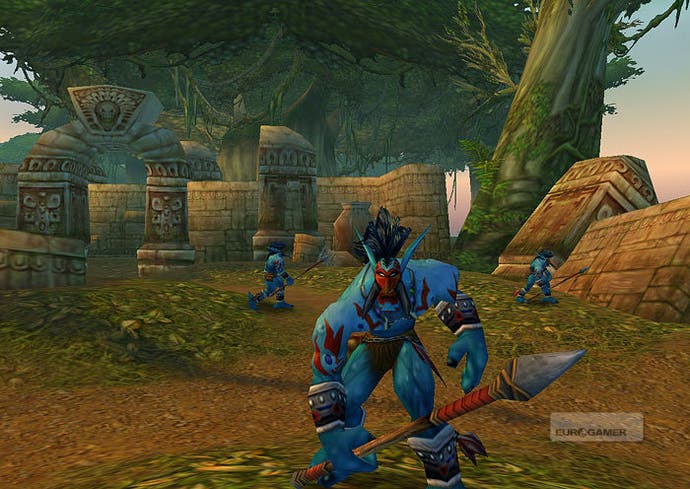The Making of World of Warcraft
Part One: From concept to launch.
"One of the core philosophies for the game was that World of Warcraft was going to be more accessible," he says. "That was absolutely a philosophy right from the beginning, before I even came to the team. It was going to be easier to get into, it wasn't going to have the kind of foibles that other MMOs had. There wasn't going to be experience loss on death - that sort of thing."
Other ideas which became vital parts of the WOW experience took longer to crystallise. "The idea that you'd have something to do all the time and the quest-driven nature of the game is something that evolved - it wasn't one of the early philosophies," Chilton recalls. "We built these awesome starting zones, places like Northshire Valley and Elwynn Forest - and then, as we continued to do zones after that, the quests just tapered off. We actually originally expected the game to go into more of an EverQuest-style free-form, where you go out there and you fight monsters until you get to the next level.
"What we found was that all the feedback that we got from our alpha testers was that once they ran out of quests, the game got boring. They were like, 'I don't know what to do any more, and I don't really feel like playing any more once I run out of quests'. We came to that realisation that, wow, this quest thing really works. We need to do this throughout the entire game!"

For Metzen, who oversees the fiction of all of Blizzard's worlds, the focus on quests was the solution to a problem he'd grappled with since the start of the project - how to tell stories in the static, restrictive world of an MMORPG. "It was a bit frustrating early on," he confesses. "We were so far out of our comfort zone, constructing something we'd never attempted before - this idea of having to create a static world. It was constraining, not being able to chase a more organic, player-specific story."
"At the end of the day, we concluded that if it does have to be more static, then we sure as hell better input as much heart and character and humour and flavour into the quest experience as we possibly can. It's frustrating as a story guy, sure, because the broad player experience is essentially on a track - but what games like this allow for is the sheer scope of the world, the breadth of the kingdoms and the races, with their own internal strife and their own internal stories, the overarching villains as well as the regional conflicts...
"It was such a big project that needed so much story - so I always felt even if we couldn't get there in terms of unique player experiences, we certainly built something that has tidal waves of story. We felt pretty good about the sheer scope."

Quests became the basic component of the World of Warcraft experience - a decision rooted equally in gameplay and storytelling, Metzen argues. "It keeps you immersed, it keeps a carrot in front of you, it leads your sense of exploration. We wanted story to be the vehicle through which you experience the world, as opposed to chasing down monsters in a field and exploring the world by going from A to Z and getting lost. That was the paradigm in early MMOs - you would simply head out, and if you found yourself in a place that was above your level, you got clobbered and learned not to go there."
The quests delivered another element of gameplay which the team hadn't expected. "We called it the Christmas Tree Effect," Metzen recalls, chuckling. "You walked into a new town, and suddenly there were five or six characters standing around who all had these big gold exclamation points. There's something very rewarding about that - like, ooh! Check it out! There's all sorts of stuff for me to do here! In a purely videogame way, as simple as Mario jumping to catch a coin, that felt really good. It created a fun player emotion."
